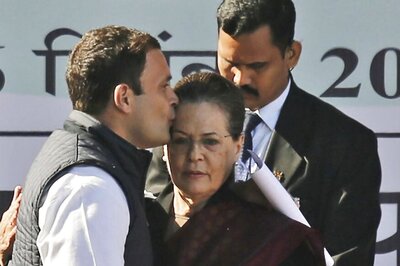
views
Natalie Shaw has plenty to smile about. A 45-day holiday exploring the palaces and forts of Jaipur and other cities ought to be reason enough, but the real sparkle comes from the fact that she managed to save about 1,920 pounds (Rs 1.36 lakh) during this trip.
The savings come from her decision to get her dental treatment done in Jaipur. Back home in London, a root canal and teeth whitening procedure would have cost her around 2,200 pounds (around Rs 1.56 lakh), which was “frightfully expensive”. She had consulted her medical insurance company, which advised her to check out a dental hospital in Jaipur in India. Treatment here cost her only around 280 pounds (Rs 20,000)!
“That’s when I decided to come to India. For the money that I would pay my dentist in London, I could afford air tickets as well as a holiday package,” says the advertising executive, whose entire holiday, including the dental treatment, cost her Rs 1.45 lakh (about 2,042 pounds). She confirmed her appointment with Dr. Balvinder Thakkar at his Jaipur Dental Hospital six months before her visit last November.
In between weekly sittings, she saw most of Rajasthan, Goa, Agra and Mount Abu. “The sittings were planned in such manner that she could holiday and cover as many places as possible and come back in time for her treatment,” says Thakkar.
Tourists like Shaw “pick out a destination for travel and plan their appointment with a dentist in advance. Over the years, this arrangement became more formal with tour operators making dental care a part of their package and the phenomenon came to be known as dental tourism,” says Naresh Jadeja, president of the US-based International Wellness and Healthcare Travel Association (IWHTA). The association is a collaboration of hospitals and medical professionals that helps provide information on medical facilities across the globe.
Kerala and Goa have been dental tourism hubs for decades. Now Jaipur has become a surprise addition to this list, with about 15 sophisticated hospitals coming up in the past five years.
Here the dentists too double up as travel agents. “The hospitals plan patients’ tours across the country and help with local guides,” says Thakkar. He too has set up a travel agency and is a sales agent for Palace on Wheels, the luxury tourist train operated by Rajasthan government. “We have also set up a farmhouse where we provide accommodation for our patients, should they desire so,” he says.
Many of the big hospitals have tied up with insurers abroad and tour operators locally. They also advertise abroad in newspapers and magazines, and on Web sites.
Why foreigners find India and Jaipur so attractive is because of the high cost of dental treatment and the long waiting lists associated with government health schemes back home.
A study by the IWHTA says that close to one-third of the people in the US do not have dental insurance. “Even the insured struggle because a surgery could cost anywhere between $3,000 and $15,000 per tooth and the insurers pay only $1,000 to $1,500 per year. Only bare minimum treatments or procedures are covered under insurance and not costly, cosmetic or laser dentistry surgery,” says the report. The case is similar in the UK and in most parts of the Western world.
A 2008 survey by Intuition Communication, a UK-based consultancy that specialises in medical tourism, showed that 90 percent of the respondents wanted to go abroad to avail cheaper dental care. Seventeen percent of those interviewed also said that the National Health Service (UK’s public health care system) waiting list was long and if they needed quick relief, they’d prefer going abroad.
While no official figures are available on the size of Jaipur’s industry, Thakkar says, “Dentists in Jaipur have earned over Rs 8 crore from tourists in the past one year alone.”
Jaipur is an unlikely destination to emerge as a hub for dental tourism. It didn’t have a single dental college until 1983. Other destinations like Kerala and Goa get more visitors/patients because they have a stronger and older heritage in dental care.
Kerala, for instance, treated close to 10,000 foreign patients last year, according to an estimate by Thomas K Paulose, a leading dentist. The unofficial estimate for Jaipur is a mere 2,000 over the last five years. Dentistry as a profession has been in existence since the 1950s in Kerala.
Plus the state has a massive population of non-resident Indians who, for several decades, have been getting their dental treatment done during visits home.
As for Jaipur, the first dental college, Government Dental College, owes its existence to the toothaches of former Chief Minister Mohan Lal Sukhadia, says D.K. Gupta, a professor at the college. Sukhadia was chief minister for 17 years until 1971. He had to fly to Mumbai (then Bombay) often as there were no dental hospitals in Jaipur. Sukhadia asked his officials to plan a hospital-cum-teaching facility in the city, which finally started functioning in 1983, a year after his death. Now there are six private colleges in Jaipur. All have been set up in the last five years.
But dental tourism got a boost when non-resident Indians started using the facilities and realised they could save a lot of money. The larger clinics in the city began to invest in better equipment to cater to this clientele. According to dentists in the city, since 2003, foreign tourists visiting Jaipur, impressed by the standards in dentistry, started frequenting these hospitals.
Gupta says that thanks to dental tourism, the city has now achieved World Health Organization standards in dental treatment. “The facilities are world-class,” agrees Prague-resident Dalibor Koilny, 48, another beneficiary of Jaipur’s skilled dentists.
The doctor who treated him, Anuj Malhotra, says that dentistry is as much a business in Jaipur as it is a branch of medicine. “We employ business representatives who make presentations in five-star hotels in the city. There is a strong element of marketing in our line of business.”
And business is thriving. It takes less than Rs 30 lakh for a dentist to set up a full-fledged clinic. “But a hospital that caters to medical tourists would require a minimum of Rs 50 crore to call itself state-of-the-art,” says Gupta.
A choice of dental colleges has brought in competition and lowered the cost of getting a degree. Until three years ago, an aspirant had to shell out a huge capitation fee to get a college admission. “Today, anyone who has passed plus-two [twelfth standard] can walk in and get a seat for Rs 1.3 lakh a year,” says Gupta, who has been teaching for over 20 years.
Practically every neighbourhood has a dental clinic. “There is one dentist for every 5,000 people,” says Gupta.
But that is not necessarily good news. “There are simply not enough people [in the city] with money in their pockets to cater to the 500-odd dentists who graduate every year.” That means, the entire fraternity depends on tourists seeking cheap dental care.
And that means, competition is something that Jaipur will have to contend with.
According to the secretary general of the Indian Dental Association, Ashok Dhoble, Goa and Kerala have been attracting a large number of medical tourists and Rajasthan, Maharashtra, Tamil Nadu and Uttar Pradesh are catching up too. Consequently, the number of multi-specialty dental clinics and hospitals are rising in these states. According to Dhoble, there are over 1.5 lakh dentists registered in the country, with Maharashtra accounting for the maximum number of dental care professionals.
All these places have the same advantages — they are all tourist destinations in their own right. There is also not much difference in the fees charged. “The tourists decide on the clinic going by the credibility of the dentist and the comfort level they enjoy in being situated at a particular location.
The pricing is almost similar across [the] board because the tourists browse through a number of Web sites before deciding on a particular dentist and so nobody can afford to charge beyond a particular level,” says Puneet Kathuria, a prominent dentist in Delhi.
Internationally, Malaysia and Thailand have emerged as other hotspots for dental tourism in Asia. Hungary and Spain are dental tourism destinations in Europe, says Jadeja.
So the edge will come through better marketing. “Malaysia has been aggressive in marketing dental tourism and has even nominated a senior dentist to the tourism board. The government in India, however, has not done much to promote the business,” he adds.
Dental tourism could grow by four times in the next five years if the state government were to make an effort to market Jaipur as a global hub for dental tourism, says Rajesh Thappar, who runs one of the oldest dental clinics in Jaipur. “By now the government should have given accreditation to some hospitals that are well-equipped. But there has been absolutely no support coming from the Rajasthan government,” he says.
Of course, Jaipur’s dentists could take the initiative and set up an association to market the city as a global destination for dentistry.

















Comments
0 comment